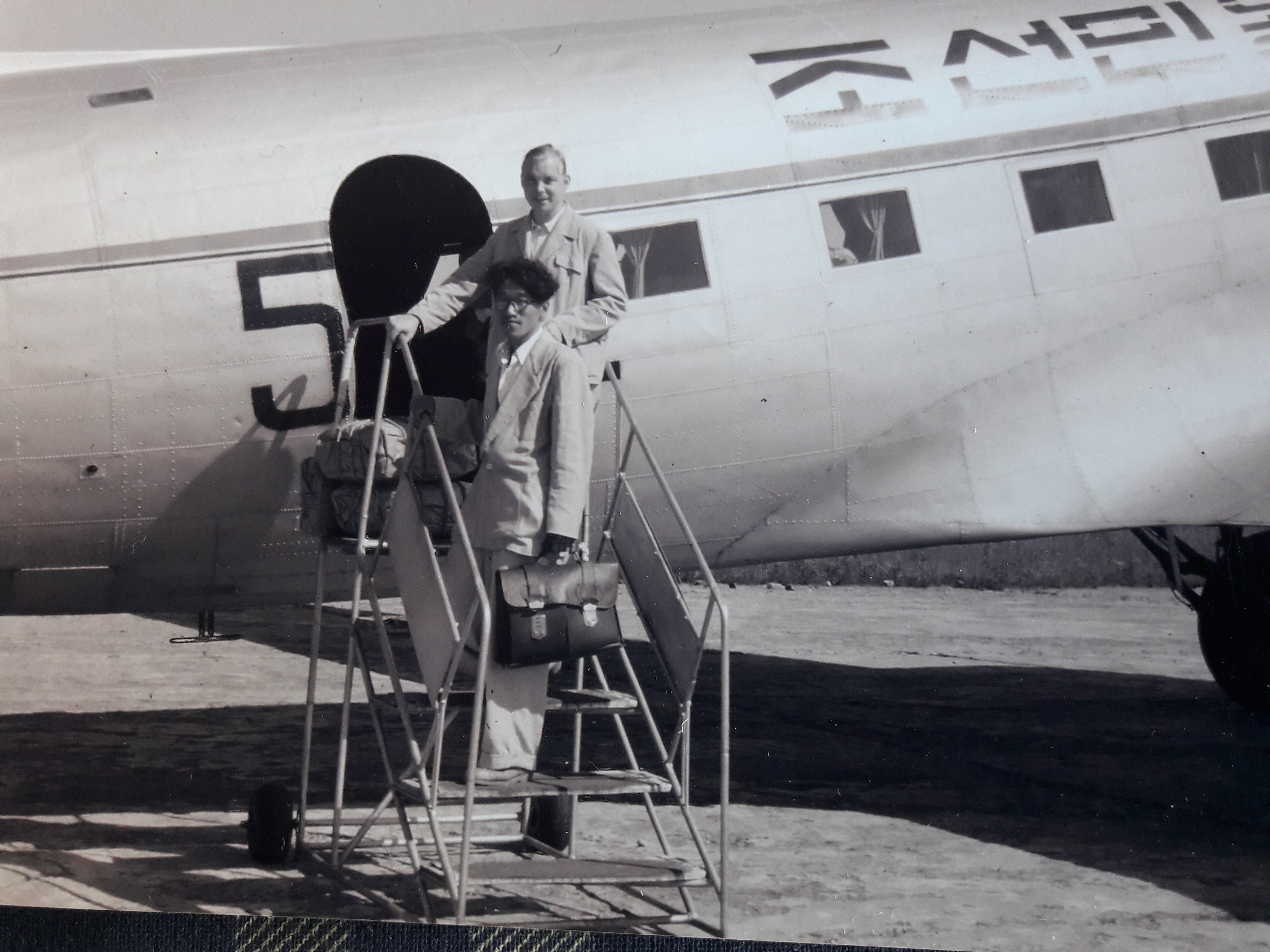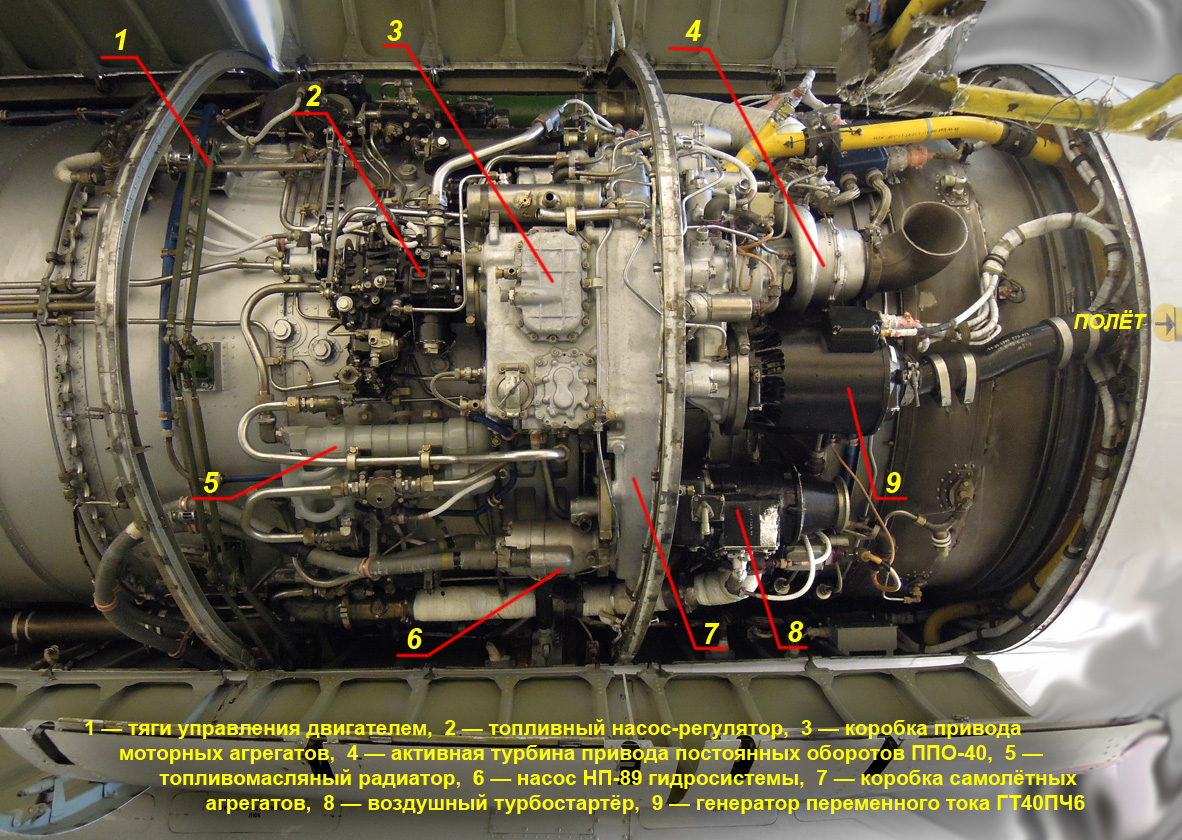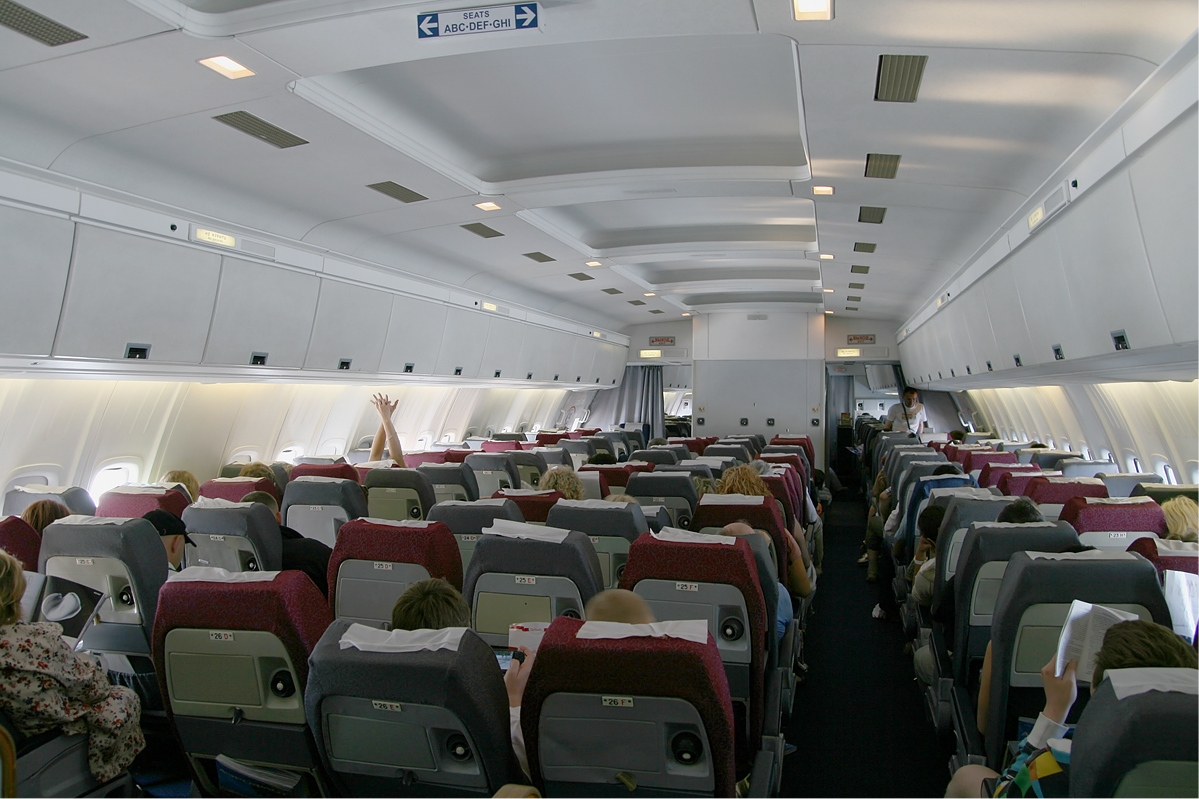|
Il-62
The Ilyushin Il-62 (russian: Илью́шин Ил-62; NATO reporting name: Classic) is a Soviet long-range narrow-body jetliner conceived in 1960 by Ilyushin. As successor to the popular turboprop Il-18 and with capacity for almost 200 passengers and crew, the Il-62 was the world's largest jet airliner when first flown in 1963. One of four pioneering long-range designs (the others being Boeing 707, Douglas DC-8, and Vickers VC10), it was the first such type to be operated by the Soviet Union and a number of allied nations. The Il-62 entered Aeroflot civilian service on 15 September 1967 with an inaugural passenger flight from Moscow to Montreal, and remained the standard long-range airliner for the Soviet Union (and later, Russia) for several decades. It was the first Soviet pressurised aircraft with non-circular cross-section fuselage and ergonomic passenger doors, and the first Soviet jet with six-abreast seating (the turboprop Tu-114 shared this arrangement) and interna ... [...More Info...] [...Related Items...] OR: [Wikipedia] [Google] [Baidu] |
Air Koryo
Air Koryo () is the state-owned national airline of North Korea, headquartered in Sunan-guyŏk, Pyongyang. Based at Pyongyang International Airport (IATA: FNJ), it operates international scheduled and charter services to points in Asia. History Early years In early 1950, SOKAO (Soviet–Korean Airline), ) was established as a joint North Korean-Soviet Union, Soviet venture to connect Pyongyang with Moscow. Regular flights began that same year. Services were suspended during the Korean War, resuming in 1953 as Bureau of Civil Aviation Ministry of Transport of DPRK The state airline was then placed under the control of the Civil Aviation Administration of Korea (CAAK), starting operations on 21 September 1955 with Lisunov Li-2, Antonov An-2 and Ilyushin Il-12 aircraft. Ilyushin Il-14s and Ilyushin Il-18s were added to the fleet in the 1960s. Jet operations commenced in 1975 when the first Tupolev Tu-154 was delivered for service from Pyongyang to Prague, East Berlin and Moscow ... [...More Info...] [...Related Items...] OR: [Wikipedia] [Google] [Baidu] |
Kuznetsov NK-8
The NK-8 was a low-bypass turbofan engine built by the Kuznetsov Design Bureau, in the thrust class. It powered production models of the Ilyushin Il-62 and the Tupolev Tu-154A and B models. Variants ;NK-8-2: (Tupolev Tu-154) ;NK-8-2U: (Tupolev Tu-154) ;NK-8-4: (Ilyushin Il-62) Applications *Ilyushin Il-62 *Tupolev Tu-154 The Tupolev Tu-154 (russian: Tyполев Ту-154; NATO reporting name: "Careless") is a three-engined, medium-range, narrow-body airliner designed in the mid-1960s and manufactured by Tupolev. A workhorse of Soviet and (subsequently) Russian ... Specifications (NK-8-2) See also References External links NK-8 on LeteckeMotory.cz- NK-8 (cs) {{Kuznetsov aeroengines Low-bypass turbofan engines 1960s turbofan engines Kuznetsov aircraft engines ... [...More Info...] [...Related Items...] OR: [Wikipedia] [Google] [Baidu] |
WikiProject Aircraft
A WikiProject, or Wikiproject, is a Wikimedia movement affinity group for contributors with shared goals. WikiProjects are prevalent within the largest wiki, Wikipedia, and exist to varying degrees within sister projects such as Wiktionary, Wikiquote, Wikidata, and Wikisource. They also exist in different languages, and translation of articles is a form of their collaboration. During the COVID-19 pandemic, CBS News noted the role of Wikipedia's WikiProject Medicine in maintaining the accuracy of articles related to the disease. Another WikiProject that has drawn attention is WikiProject Women Scientists, which was profiled by '' Smithsonian'' for its efforts to improve coverage of women scientists which the profile noted had "helped increase the number of female scientists on Wikipedia from around 1,600 to over 5,000". On Wikipedia Some Wikipedia WikiProjects are substantial enough to engage in cooperative activities with outside organizations relevant to the field at issue. For e ... [...More Info...] [...Related Items...] OR: [Wikipedia] [Google] [Baidu] |
Moscow
Moscow ( , US chiefly ; rus, links=no, Москва, r=Moskva, p=mɐskˈva, a=Москва.ogg) is the capital and largest city of Russia. The city stands on the Moskva River in Central Russia, with a population estimated at 13.0 million residents within the city limits, over 17 million residents in the urban area, and over 21.5 million residents in the metropolitan area. The city covers an area of , while the urban area covers , and the metropolitan area covers over . Moscow is among the world's largest cities; being the most populous city entirely in Europe, the largest urban and metropolitan area in Europe, and the largest city by land area on the European continent. First documented in 1147, Moscow grew to become a prosperous and powerful city that served as the capital of the Grand Duchy that bears its name. When the Grand Duchy of Moscow evolved into the Tsardom of Russia, Moscow remained the political and economic center for most of the Tsardom's history. When th ... [...More Info...] [...Related Items...] OR: [Wikipedia] [Google] [Baidu] |
Empennage
The empennage ( or ), also known as the tail or tail assembly, is a structure at the rear of an aircraft that provides stability during flight, in a way similar to the feathers on an arrow.Crane, Dale: ''Dictionary of Aeronautical Terms, third edition'', p. 194. Aviation Supplies & Academics, 1997. Aviation Publishers Co. Limited, ''From the Ground Up'', p. 10 (27th revised edition) The term derives from the French language verb ''empenner'' which means " to feather an arrow". Most aircraft feature an empennage incorporating vertical and horizontal stabilising surfaces which stabilise the flight dynamics of yaw and pitch, as well as housing control surfaces. In spite of effective control surfaces, many early aircraft that lacked a stabilising empennage were virtually unflyable. Even so-called "tailless aircraft" usually have a tail fin (usually a vertical stabiliser). Heavier-than-air aircraft without any kind of empennage (such as the Northrop B-2) are rare, and generally use ... [...More Info...] [...Related Items...] OR: [Wikipedia] [Google] [Baidu] |
Turboprop
A turboprop is a turbine engine that drives an aircraft propeller. A turboprop consists of an intake, reduction gearbox, compressor, combustor, turbine, and a propelling nozzle. Air enters the intake and is compressed by the compressor. Fuel is then added to the compressed air in the combustor, where the fuel-air mixture then combusts. The hot combustion gases expand through the turbine stages, generating power at the point of exhaust. Some of the power generated by the turbine is used to drive the compressor and electric generator. The gases are then exhausted from the turbine. In contrast to a turbojet or turbofan, the engine's exhaust gases do not provide enough energy to create significant thrust, since almost all of the engine's power is used to drive the propeller. Technological aspects Exhaust thrust in a turboprop is sacrificed in favor of shaft power, which is obtained by extracting additional power (beyond that necessary to drive the compressor) from turbine ex ... [...More Info...] [...Related Items...] OR: [Wikipedia] [Google] [Baidu] |
Turbofan
The turbofan or fanjet is a type of airbreathing jet engine that is widely used in aircraft engine, aircraft propulsion. The word "turbofan" is a portmanteau of "turbine" and "fan": the ''turbo'' portion refers to a gas turbine engine which achieves mechanical energy from combustion, and the ''fan'', a ducted fan that uses the mechanical energy from the gas turbine to force air rearwards. Thus, whereas all the air taken in by a turbojet passes through the combustion chamber and turbines, in a turbofan some of that air bypasses these components. A turbofan thus can be thought of as a turbojet being used to drive a ducted fan, with both of these contributing to the thrust. The ratio of the mass-flow of air bypassing the engine core to the mass-flow of air passing through the core is referred to as the bypass ratio. The engine produces thrust through a combination of these two portions working together; engines that use more Propelling nozzle, jet thrust relative to fan thrust are ... [...More Info...] [...Related Items...] OR: [Wikipedia] [Google] [Baidu] |
Kuznetsov Design Bureau
The Kuznetsov Design Bureau (russian: СНТК им. Н. Д. Кузнецова, also known as OKB-276) was a Russian design bureau for aircraft engines, administrated in Soviet times by Nikolai Dmitriyevich Kuznetsov. It was also known as (G)NPO Trud (or NPO Kuznetsov) and Kuybyshev Engine Design Bureau (KKBM). NPO Trud was replaced in 1994 by a Joint Stock Company (JSC), Kuznetsov R & E C. By the early 2000s the lack of funding caused by the poor economic situation in Russia had brought Kuznetsov on the verge of bankruptcy. In 2009 the Russian government decided to consolidate a number of engine-making companies in the Samara region under a new legal entity. This was named JSC Kuznetsov, after the design bureau. Products The Kuznetzov Bureau first became notable for producing the monstrous Kuznetsov NK-12 turboprop engine that powered the Tupolev Tu-95 bomber beginning in 1952 as a development of the Junkers 0022 engine. The new engine eventually generated about 15,000 horse ... [...More Info...] [...Related Items...] OR: [Wikipedia] [Google] [Baidu] |
Council Of Ministers (Soviet Union)
The Council of Ministers of the Union of Soviet Socialist Republics ( rus, Совет министров СССР, r=Sovet Ministrov SSSR, p=sɐˈvʲet mʲɪˈnʲistrəf ɛsɛsɛˈsɛr; sometimes abbreviated to ''Sovmin'' or referred to as the ''Soviet of Ministers''), was the ''de jure'' government of the Union of Soviet Socialist Republics (USSR), comprising the main executive and administrative agency of the USSR from 1946 until 1991. During 1946 the Council of People's Commissars was reorganized as the Council of Ministers. Accordingly, the People's Commissariats were renamed as Ministries. The council issued declarations and instructions based on and in accordance with applicable laws, which had obligatory jurisdictional power in all republics of the Union. However, the most important decisions were made by joint declarations with the Central Committee of the Communist Party of Soviet Union (CPSU), which was ''de facto'' more powerful than the Council of Ministers. During 1 ... [...More Info...] [...Related Items...] OR: [Wikipedia] [Google] [Baidu] |
Il-96
The Ilyushin Il-96 (russian: Илью́шин Ил-96) is a Russian quadjet long-haul wide-body airliner designed by Ilyushin in the former Soviet Union and manufactured by the Voronezh Aircraft Production Association in Russia. It is powered by four high-bypass Aviadvigatel PS-90 two-shaft turbofan engines. Development It was first flown in 1988 and certified in 1992. In June 2005, the Volga-Dnepr Group signed a 15-year financial agreement with Ilyushin Finance Corporation (IFC) to take delivery of two new-build Il-96-400T aircraft, to be operated by Volga-Dnepr's subsidiary AirBridge Cargo. The first was due to have been delivered in late 2006. The Cuban Government newspaper '' Granma'' announced on 3 January 2006 the first official flight of the Cubana Il-96-300, from Havana to Buenos Aires, Argentina. On 11 August 2009 Russian Minister of Industry and Trade Viktor Khristenko announced that manufacturing of the Il-96-300 would cease. In particular, the Il-96-300 had b ... [...More Info...] [...Related Items...] OR: [Wikipedia] [Google] [Baidu] |
Il-86
The Ilyushin Il-86 (russian: Илью́шин Ил-86; NATO reporting name: Camber) is a short- to medium-range wide-body jet airliner that served as the USSR's first wide-bodied aircraft. Designed and tested by the Ilyushin design bureau in the 1970s, it was certified by the Soviet aircraft industry, manufactured and marketed by the USSR. Developed during the rule of Leonid Brezhnev, the Il-86 was marked by the economic and technological stagnation of the era: it used engines more typical of the late 1960s, spent a decade in development, and failed to enter service in time for the Moscow Olympics, as was originally intended. The type was used by Aeroflot and successor post-Soviet airlines and only three of the total 106 constructed were exported. At the beginning of 2012, only four Il-86s remained in service, all with the Russian Air Force. By the end of 2020 the number in active service was reduced to three. Development Background In the mid-1960s, the United States and W ... [...More Info...] [...Related Items...] OR: [Wikipedia] [Google] [Baidu] |
Great Recession
The Great Recession was a period of marked general decline, i.e. a recession, observed in national economies globally that occurred from late 2007 into 2009. The scale and timing of the recession varied from country to country (see map). At the time, the International Monetary Fund (IMF) concluded that it was the most severe economic and financial meltdown since the Great Depression. One result was a serious disruption of normal international relations. The causes of the Great Recession include a combination of vulnerabilities that developed in the financial system, along with a series of triggering events that began with the bursting of the United States housing bubble in 2005–2012. When housing prices fell and homeowners began to abandon their mortgages, the value of mortgage-backed securities held by investment banks declined in 2007–2008, causing several to collapse or be bailed out in September 2008. This 2007–2008 phase was called the subprime mortgage crisis. ... [...More Info...] [...Related Items...] OR: [Wikipedia] [Google] [Baidu] |






